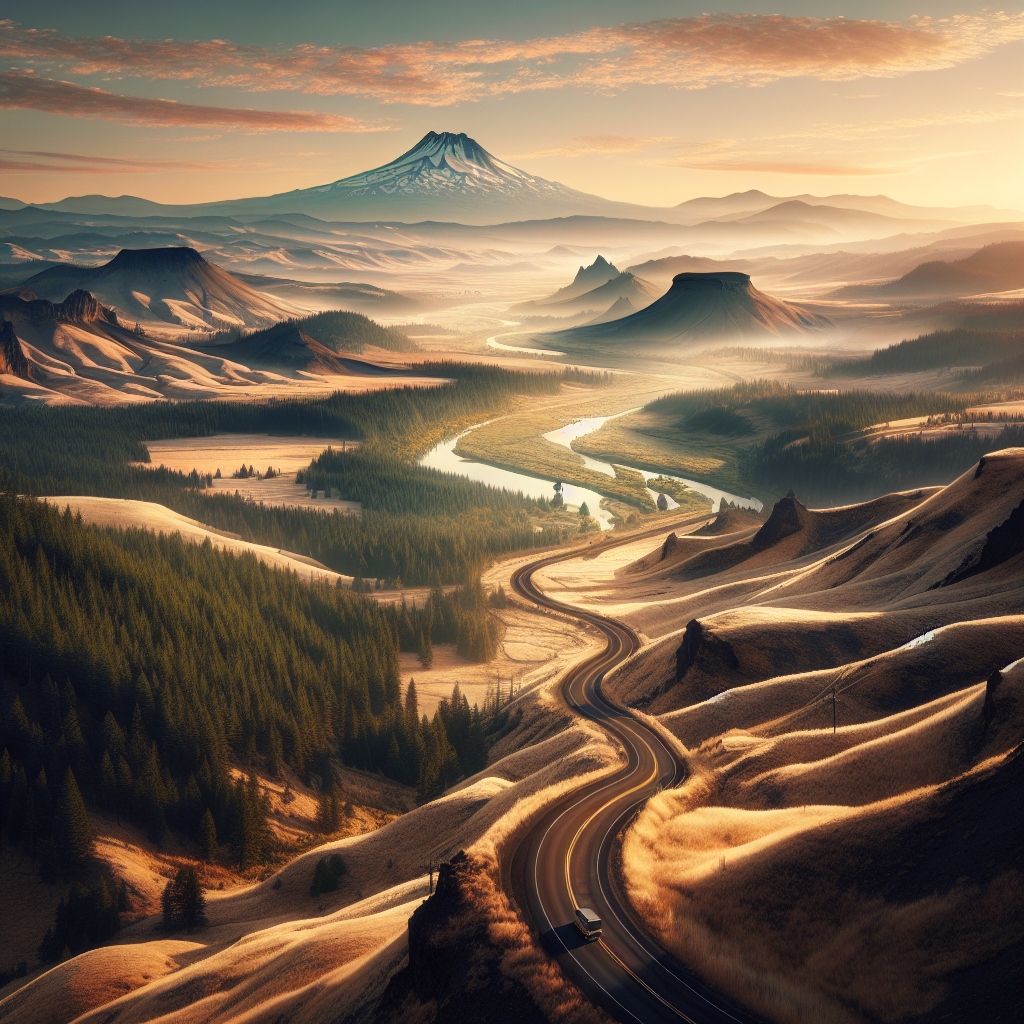Title: Your Unforgettable Journey Through Oregon’s Volcanic Legacy: A Geological Adventure
Heading: Start Your Journey in the Northern Cascade Range
Begin this geologic adventure in the northern part of Oregon’s Cascade Range, right around Mt. Hood. It’s the highest point in Oregon, dressed with glaciers year-round. For a rewarding and straightforward hike, take the Trillium Lake Loop Trail, offering close-up views of Mt. Hood. Remember to pack warm clothing as weather here can change in an instant!
Whether amateur or professional geologist, Timberline Lodge, a historic ski lodge on the southern flank of Mt. Hood, is a must visit. With walls and pillars made from local stones and fossils, it’s like a geology lesson disguised as a cozy retreat.
Heading: Soak Up the Central Oregon High Desert

As you journey south, the lush forests and high peaks of the Cascade Range give way to Central Oregon’s high desert. This region is known for its unique rock formations, like those at Smith Rock State Park. The rock climbing here is world-class, but if you prefer to keep your feet on solid ground, the Canyon Trail offers spectacular views of the towering cliffs and the winding Crooked River below.
Continue on to Newberry National Volcanic Monument outside of Bend, where you can take the interpretative trail around Lava Butte – a 500-foot cinder cone. The volcanic landforms and geological wonders here are a sight to behold. Keep in mind, during summer, Central Oregon’s dry, arid climate can get quite hot. Stay hydrated and remember a hat and sunscreen.
Heading: Experience the Wonders of Crater Lake
Next, head to Southern Oregon where you’ll find Crater Lake National Park, the site of Mt. Mazama’s catastrophic eruption 7,700 years ago. The deep blue color of Crater Lake itself, the deepest lake in the U.S, is mesmerizing. Be prepared, Crater Lake can be crowded in summer and early fall. To beat the crowds, plan an early start or visit during weekdays.
Remember, winter access can be limited due to heavy snowfall, so check conditions ahead of time. For a unique perspective, take the Crater Lake Rim Drive which offers stunning views of the pumice desert, the Phantom Ship rock formation, and the lake itself.
Heading: Cap Your Adventure in Klamath Falls
As your geological trip winds down, make your last stop in Klamath Falls. Here, you can visit the Favell Museum showcasing a vast collection of Native American artifacts and arrowheads – tools carved directly from Oregon’s geologic past.
Klamath Falls is also the gateway to the stunning Lava Beds National Monument over the state border in California. With more than 700 caves, formed from lava flows piled atop one another, it’s a final testament to the volcanic history of this region.
Seasoned Oregonians often advise keeping an eye out for elusive wildlife ranging from pronghorn antelope to bald eagles, throughout this leg of the journey. Don’t forget to make pit stops at local eateries in Klamath Falls to sample Oregon’s iconic craft beers and locally-sourced meals.
Endnote: Final Nuggets of Advice
Oregon’s volcanic legacy provides a road trip like no other, filled with awe-inspiring sights and captivating geological insights. Do remember, the weather in Oregon can be fickle, quick to turn from sunny and warm to cold and rainy, especially in the mountains and along the coast, so do as the locals do – dress in layers and always be prepared for a sudden change.
Lastly, keep an open mind and heart, savor every moment, every landscape and every geological wonder. Welcome to Oregon’s volcanic legacy – a geological adventure that even Mother Nature herself would be proud of.
